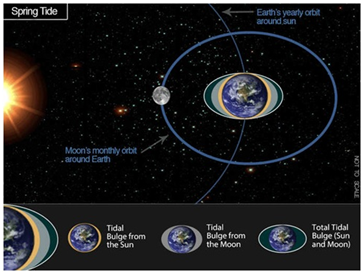

Context
According to a study published, the phenomenon of wobbling is expected to lead to more flooding on Earth in the middle of the next decade.
About
What is ‘wobble’?
- The moon wobble is a regular swaying in the moon’s orbit.
- It was first documented in 1728.
- A moon wobble is described as the fluctuations in the moon’s orbit.
- The moon’s orbital plane around the Earth is at an approximate 5-degree inclined to the Earth’s orbital plane around the sun.
- Because of this, the path of the moon’s orbit seems to fluctuate over time and completes a full cycle every 18.6 years (nodal cycle).
- It is mostly circles and ovals, depending on the perspective.

Origin of wobble
- At certain points along the cycle, the moon’s gravitational pull comes at such an angle that it yanks one of the day’s two high tides a little bit higher.
- High-tide flooding related to climate change is also expected to break records with increasing frequency over the next decade.
What impact does the wobble have on Earth?
- The moon wobble impacts the gravitational pull of the moon, and it indirectly influences the ebb and flow of tides here on the Earth.
- Each wobble cycle has the power to amplify and suppress the tides on the Earth.
- It is expected that the upcoming changes in the lunar cycle will pose a serious threat, as it will amplify high tides coupled with the rising sea levels.
- It is one of the many factors that can either exacerbate rising sea levels or counteract them, alongside other variables like weather and geography.



